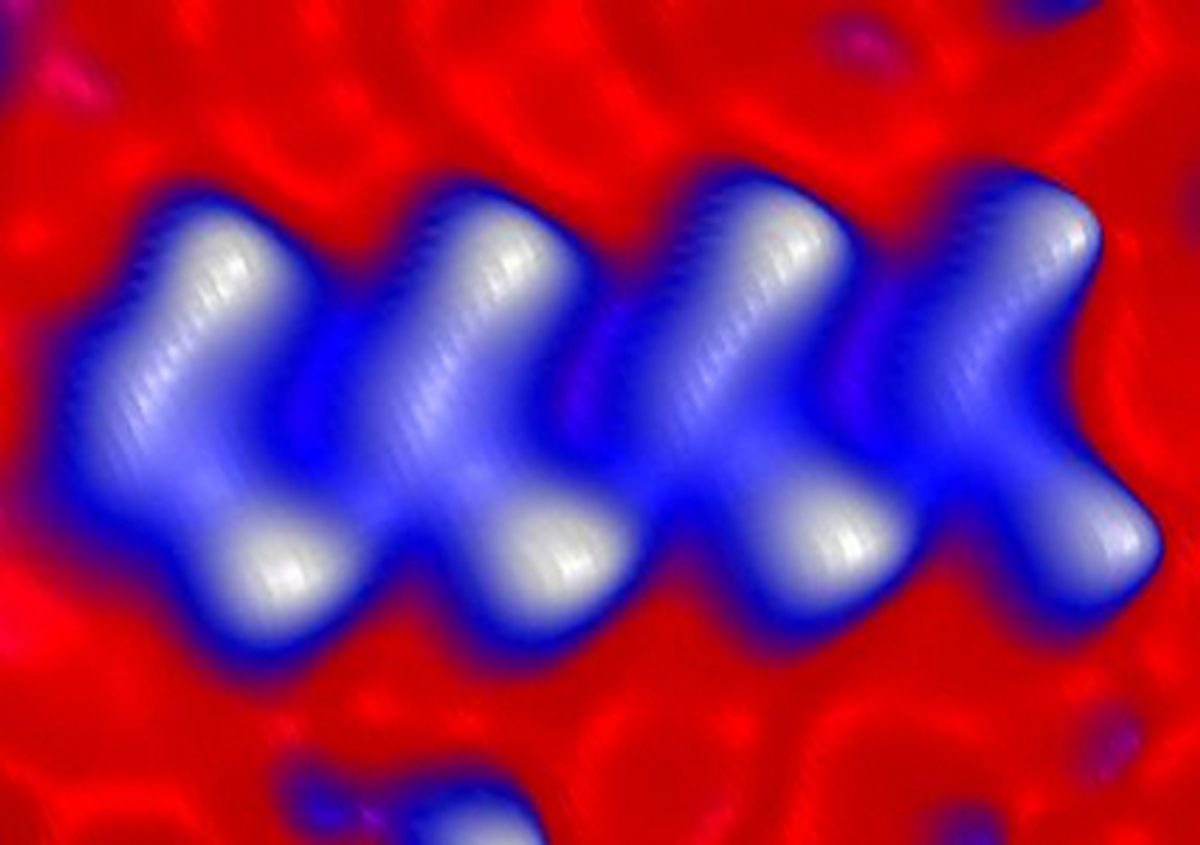One of the most vexing problems faced in nanoscale electronics has been that the more you decrease the size of the metallic interconnects the greater their resistance. This typically leads to Joule heating of the interconnects that melts and destroys them.
Researchers at the University of Ohio are reporting that they have created a molecule chain made from organic salt that exhibits superconductivity thereby bringing its resistance down to zero.
The research was initially published in Nature Nanotechnology and describes how the researchers were able to first synthesize the molecules of organic salt ((BETS)2-GaCl4) place them on a silver substrate and then with a scanning tunneling microscope were able to observe how when formed into groups as small as just four pairs could exhibit superconductivity.
Beyond the claims that the researchers have created the smallest known superconductor, this work would seem to reopen the option of using metallic interconnects at this nanometer scale.
Dexter Johnson is a contributing editor at IEEE Spectrum, with a focus on nanotechnology.




